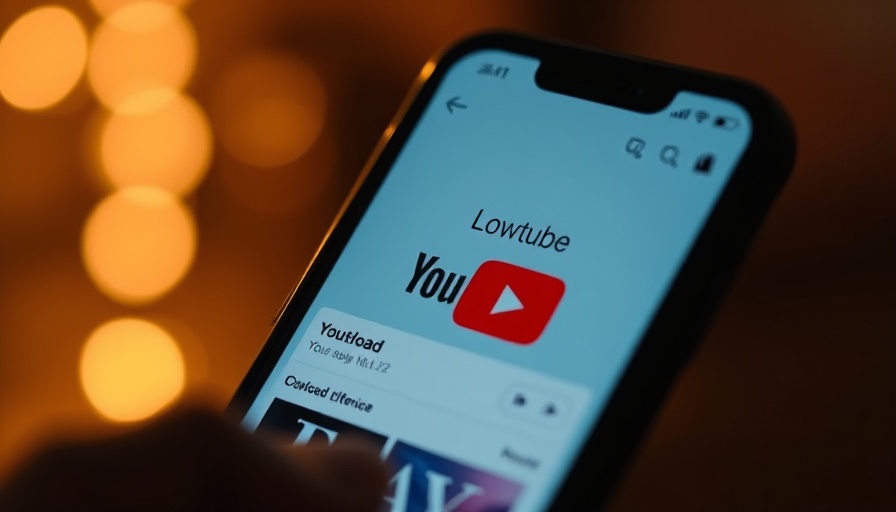
The Evolution of Online Content Consumption
The advent of YouTube's recent updates marks a watershed moment in the landscape of digital media. Traditionally, platforms like YouTube fostered a sense of online monoculture, where a handful of viral videos dominated user attention. However, the emergence of diverse niche communities indicates a pivot away from this model. Instead, users are crafting personalized content consumption experiences that reflect their unique interests and preferences, actively curating the type of media they engage with.
The Death of Monoculture: What It Means
Online monoculture refers to a scenario where a singular narrative or style prevails among a massive audience. This phenomenon has often led to homogenized content offerings, leaving little room for alternative viewpoints. However, data suggests that users increasingly seek out content that resonates with their personal experiences. The death of monoculture doesn't merely signal a loss of uniformity; it opens the door for richer storytelling from diverse creators, thereby enhancing overall digital inclusivity.
The Rise of Detail-Oriented Communities
As YouTube brings tools that support niche content creation, communities focusing on specific topics have flourished. Channels dedicated to unique hobbies, regional culture, or specific educational content are gaining traction. This shift enables a deeper engagement among users, fostering a sense of belonging often missing from mainstream media interactions. Mechanisms like curated playlists, recommendations based on viewing habits, and interactive content encourage exploration beyond the mainstream.
Social Connections: The Heart of Online Communities
The psychological aspects surrounding content consumption cannot be overlooked. For viewers, the appeal of connecting with like-minded individuals or finding content that authentically reflects their experiences leads to more profound social interactions. As users engage with niche topics, they create more interconnected communities. This shift in focus from mere viewership to meaningful interactions enriches the online experience, forming a new digital culture based on shared interests.
Counterarguments: Embracing Diversity or Fragmentation?
While the move away from online monoculture brings many benefits, critics warn it may also result in fragmentation. Such divergence could lead to echo chambers, where certain perspectives dominate while others are marginalized. As channels catering to specific interests proliferate, a reality emerges where opposing views might receive limited exposure. Understanding the balance between embracing diversity and ensuring a well-rounded content landscape is crucial to the evolution of digital media.
Future Predictions: The Road Ahead for Content Platforms
What does this mean for the future of platforms like YouTube? Moving forward, there’s potential for more nuanced metrics gauging user engagement that encompasses quality over quantity. As platforms adapt algorithms to cater to more diverse audiences, creators may also benefit from bespoke support structures that enhance their visibility. The success of this approach hinges on responsiveness to community feedback and a commitment to equitable representation across various content categories.
Actionable Insights: Embracing the Evolution
For content creators: consider tapping into underrepresented topics that resonate deeply with casual viewers. Experimentation with themes that reflect localized or niche interests may lead to robust community engagement. For viewers: explore beyond the mainstream offerings. Engaging with content that challenges your norms can cultivate a richer understanding of diverse perspectives. The journey through YouTube's newly evolving landscape is driven by both creator innovation and viewer engagement.
 Add Row
Add Row  Add
Add 




 Add Row
Add Row  Add
Add 

Write A Comment